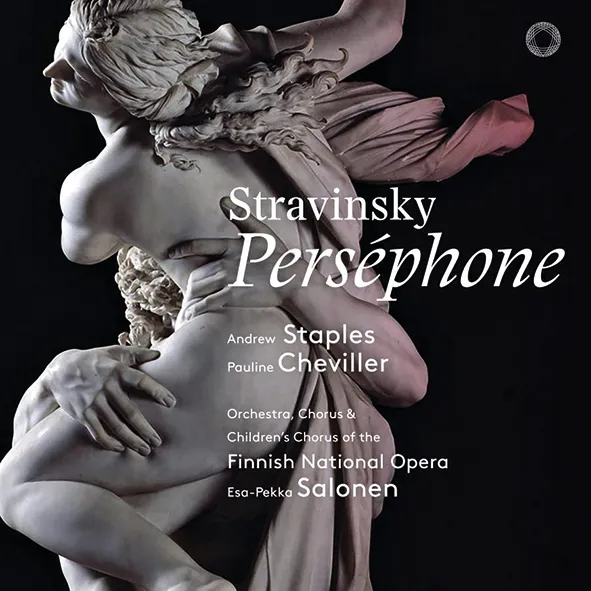
Stravinsky Perséphone Andrew Staples (tenor), Pauline Cheviller (speaker); Finnish National Opera Chorus, Children’s Chorus & Orchestra/Esa-Pekka Salonen Pentatone PTC 5186 688 (hybrid CD/SACD) 51:03 mins
Avoiding staginess in the spoken narration is a key ingredient of any successful Perséphone, Stravinsky’s melodrama composed in 1934, and Pauline Cheviller does well in that respect in this new recording, made live at the Helsinki Festival. There’s sensuality and wonder as she contemplates ‘la tiède caresse du jour’, but they are not over-larded. And there’s urgency without melodrama as Cheviller traces the long emotional arc of Perséphone’s emergence from the underworld in Part Two.
Tenor Andrew Staples, as the priest Eumolphe, has the major benefit of excellent pitching in a part which is constantly stave-hopping and testing his vocal agility. Although capable of pinging out high notes where necessary, he is never effortful, and conjures an appropriately hieratic manner in his oration at the work’s conclusion, defining Perséphone’s role in perpetuity. The choir responds skilfully to Salonen’s sentient lightening of textures in the apostrophisation of nature’s beauty in Part One, and makes expressive sense of the difficult staccato accents in the strangely affecting ‘Les ombres ne sont pas malheureuses’. Ensemble is occasionally not watertight, but that is almost inevitable in music where Stravinsky makes extensive use of syncopation and syllabic separations. Knitting the various strands together is conductor Esa-Pekka Salonen, who ensures a pleasing uniformity of style among the performers, particularly where accenting and phrase-shaping are concerned. Lithe and flexible in approach, Salonen is the defining influence on this excellent recording. It has no weak links, and captures evocatively the elusive, mythopoeic atmosphere of this still neglected piece.
Terry Blain